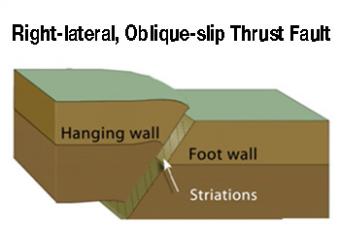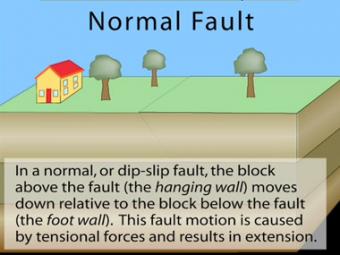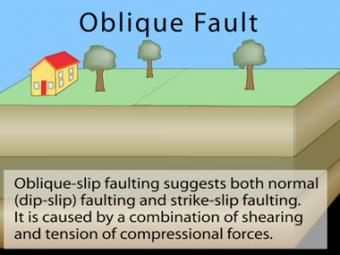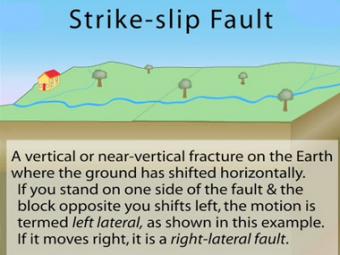20s Novice Spanish

What causes a fault to move in oblique direction?
On this fault, the right-lateral, oblique-slip faulting suggests both thrust faulting and strike-slip faulting. It is caused by a combination of shearing and compressional forces. Nearly all faults will have some component of both dip-slip (normal or reverse) and strike-slip, so defining a fault as oblique requires both dip and strike components to be measurable and significant.

In a normal fault, the block above the fault moves down relative to the block below the fault. This fault motion is caused by extensional forces and results in extension. Other names: normal-slip fault, tensional fault or gravity fault. Examples: Sierra Nevada/Owens Valley; Basin & Range faults.

This left-lateral oblique-slip fault suggests both normal faulting and strike-slip faulting. It is caused by a combination of shearing and tensional forces. Nearly all faults will have some component of both dip-slip (normal or reverse) and strike-slip, so defining a fault as oblique requires both dip and strike components to be measurable and significant.

In a strike-slip fault, the movement of blocks along a fault is horizontal. The fault motion of a strike-slip fault is caused by shearing forces. Other names: transcurrent fault, lateral fault, tear fault or wrench fault. Examples: San Andreas Fault, California; Anatolian Fault, Turkey.